What Was It Like When Venus And Mars Became Uninhabitable Planets?
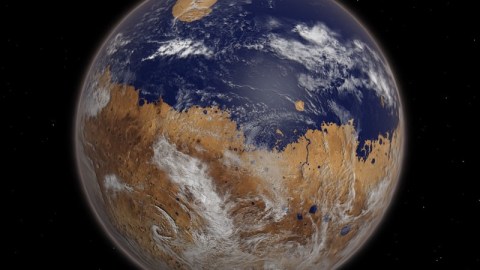
Earth wasn’t the only potentially habitable planet in the early Solar System. What happened to Mars?
If you could travel back in time to the early stages of the Solar System, some 4.5 billion years ago, you wouldn’t find a single life-friendly world, but three. Venus, Earth, and Mars all looked very similar from a planetary perspective, as they all had substantial surface gravity and atmospheres similar to Earth’s in thickness. There were volcanoes, watery oceans, and complex interactions that enabled these worlds to retain the heat they absorbed from the Sun.
Moreover, their atmospheric compositions were similar, all rich in hydrogen, ammonia, methane, nitrogen and water vapor. For a time, conditions were favorable to life arising on all three worlds, but it didn’t last. Venus experienced a runaway greenhouse effect, boiling its oceans after perhaps 200 million years. But Mars lasted far longer before becoming inhospitable: over a billion years. These are their stories.
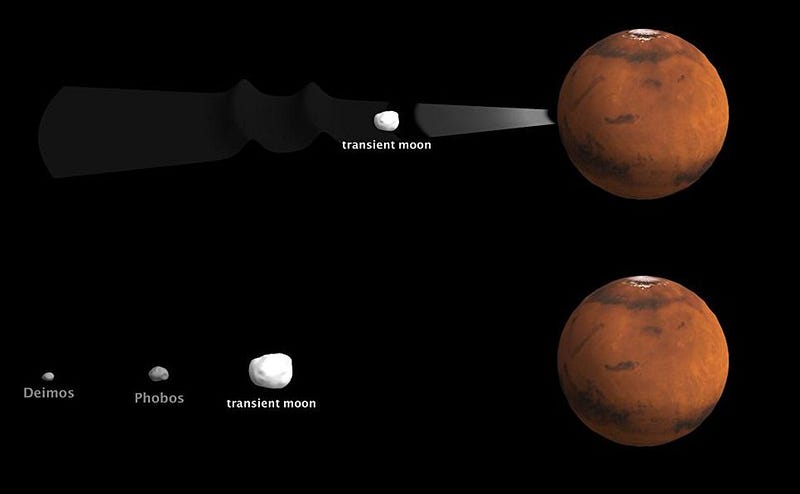
It’s remarkable that worlds that are so different from one another might have had such similar histories in their early stages. Both Earth and Mars likely experienced catastrophic early collisions, with Earth’s creating our Moon and Mars’s creating three moons, the largest of which likely fell back onto Mars at a later date.
All three worlds — Venus, Earth, and Mars — were shaped by external impacts and internal geologic processes, formed mountain ranges atop extensive highlands, and great basins stretching across the dramatic lowlands. They had molten, liquid interiors, which caused large amounts of volcanic eruptions, adding both volatiles and carbon dioxide to the atmosphere and creating relatively smooth ocean bottoms. The liquid water that survived became planet-wide oceans, completely covering the lowland areas.
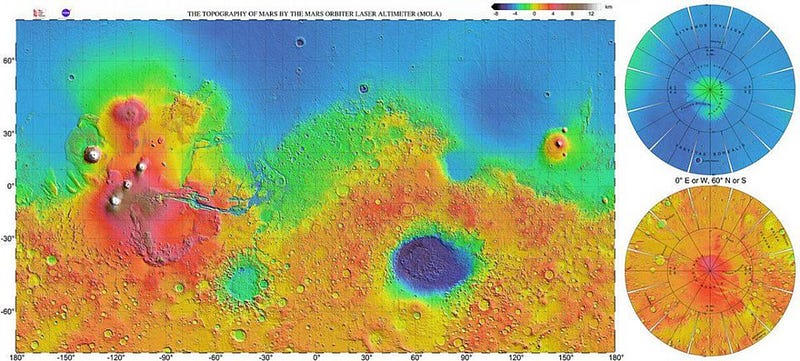
When you compare Venus to Earth to Mars, there are three major differences:
- their orbital distances from the Sun,
- the rate of their planetary rotations,
- and their physical sizes.
The close proximity of Venus to the Sun likely doomed it early on. Although Venus 95% the size of Earth and the Venus-Sun distance is 72% of the Earth-Sun distance, that latter figure translates into Venus receiving double the energy that Earth receives. The water vapor in Venus’s atmosphere caused it to retain more of the Sun’s heat, which resulted in a further increase in the amount of atmospheric water vapor. After a mere 200 million years, this led to a runaway greenhouse effect, causing Venus’s surface water to boil away. It never recovered.
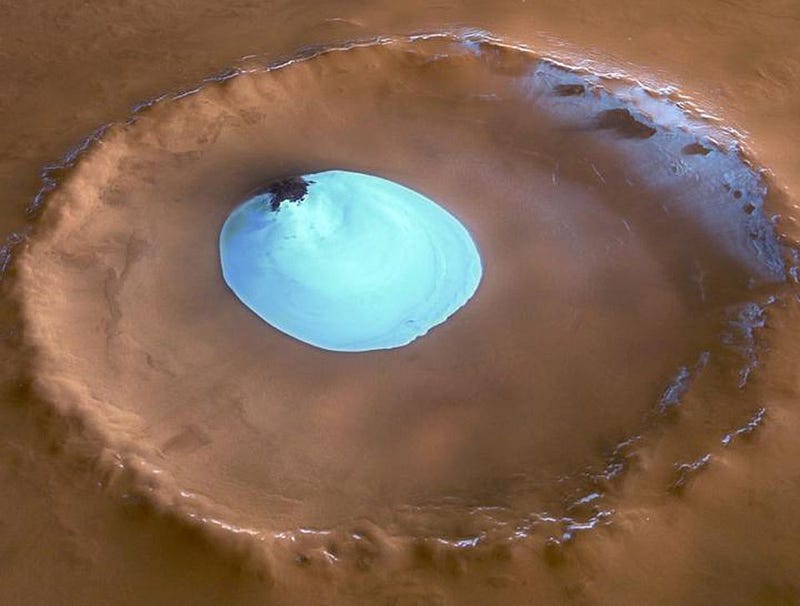
But at a greater distance from the Sun, Mars appeared to have the opposite problem. Mars is much smaller than Earth at barely half the size, but it orbits more than 50% farther away from the Sun, meaning it receives only 43% of the energy input that we get here on Earth. With such a low amount of incident energy arriving, you might think that liquid water would be impossible, and that Mars would be destined to be eternally frozen.
Fortunately, we know beyond a shadow of a doubt that this wasn’t the case! There’s tremendous evidence for not only past liquid water on Mars — in the form of sedimentary rock, hematite spheres, dried-up riverbeds with oxbow bends, etc. — but of current liquid water as well. Down the slopes of crater walls, although the claimed detection is controversial, there are water flows that leave briny deposits even today.
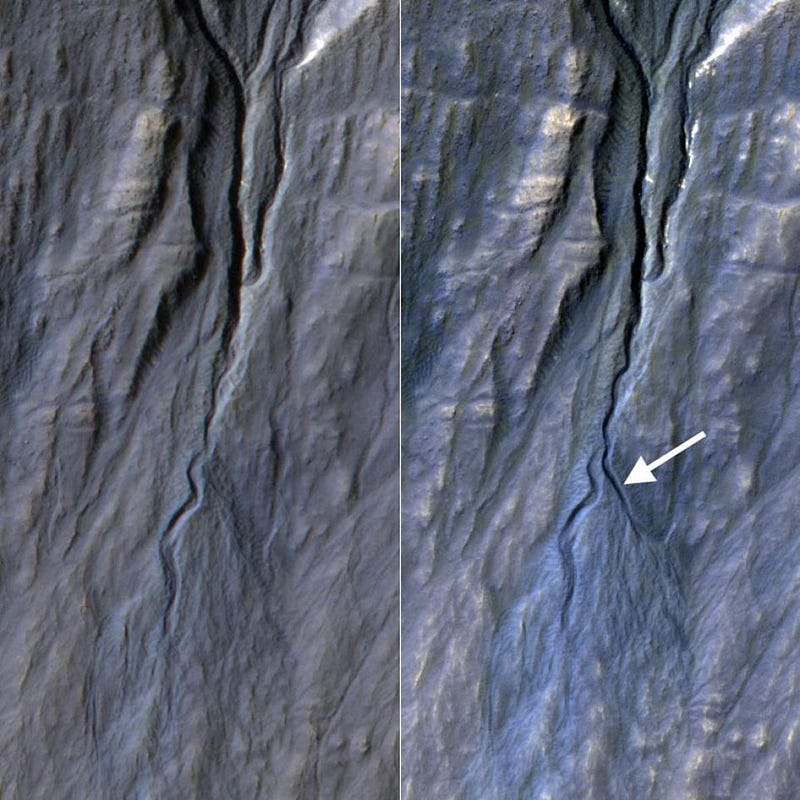
This evidence teaches us something about the early conditions on Mars: there must have been a substantial atmosphere with a strong greenhouse effect, sufficient to keep liquid oceans, rivers, and lakes on the surface. It had to cause much greater surface pressures than Mars’s current thin atmosphere is capable of, and it had to do a phenomenal job of trapping the Sun’s heat to prevent the world from freezing.
Such an atmosphere is impossible today. The Sun emits a constant stream of charged particles known as the solar wind, and they’re constantly smashing into the Martian atmosphere. Because its surface gravity is so much lower than Earth’s, it’s easy to knock those atmospheric particles off of Mars and into the abyss of interstellar space. Thanks to NASA’s Mars Maven mission, we can even measure how Mars is losing its atmosphere today.
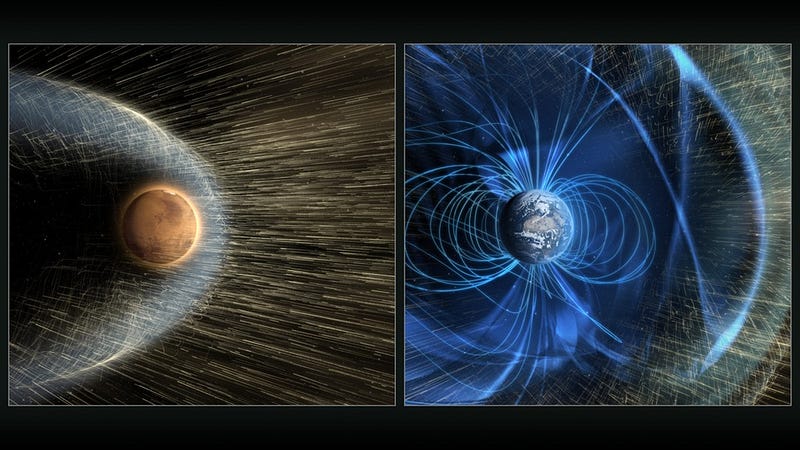
It’s a fast process! By our calculation, it should only take tens of millions of years, perhaps up to a hundred million years, to transform Mars from an Earth-like atmosphere to one incapable of supporting liquid oceans, temperate climates, and life.
So how, then, did Mars manage to stay in its water-rich state for so long: for some 1.5 billion years?
The answer lies deep beneath the surface: in the Martian core. Mars and Earth have a few things in common that are very important:
- they both rotate on a tilted axis,
- about once every 24 hours,
- and contain metal-rich cores at ultra-high temperatures and pressures.
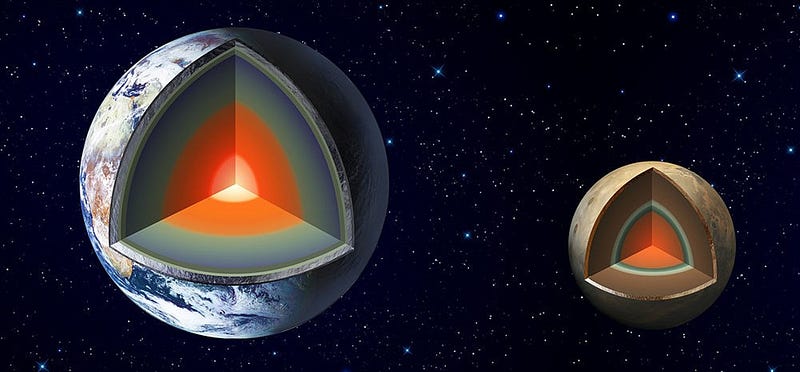
Back in the early days of the Solar System, before so much of that heat in the Martian core was radiated away into space, it likely produced an active magnetic field surrounding Mars, similar to what our core creates around Earth. Such a magnetosphere would protect the planet from the solar wind, diverting the overwhelming majority of the wind around Mars, leaving the atmosphere largely untouched.
For around 1.5 billion years, this was the state of affairs. Mars had seasons, liquid water, a weather cycle, tides, and the same ingredients for life that Earth was born with. We know that life took hold on Earth within a few hundred million years at most, and Mars had at least six times that duration where it was an ocean-rich world. The possibility of past life on Mars is enticing.
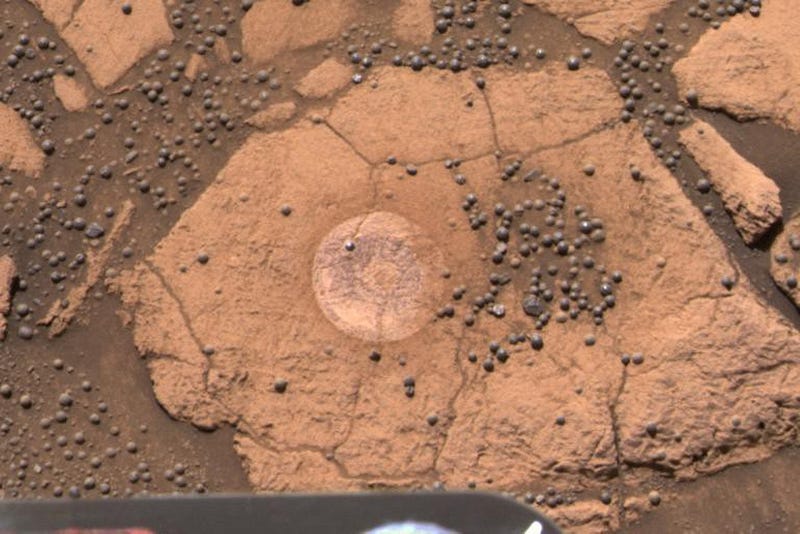
But the changes that Mars endured were rapid and sweeping. Planets are born with a fixed amount of internal heat, which radiates away over their lifetime. A planet like Mars, with half the diameter of Earth, is born with only about 10–15% the amount of internal heat as our world, and will therefore see a greater percentage of it radiate away much faster than Earth will.
Approximately 3 billion years ago, the core of Mars became cool enough that it stopped producing that protective magnetic dynamo, and the solar wind began striking the Martian atmosphere. In short order, which is to say in just tens of millions of years, the atmosphere was knocked off into interplanetary space. As a result, the oceans were unable to remain in liquid form, and either froze beneath the surface or sublimated away.
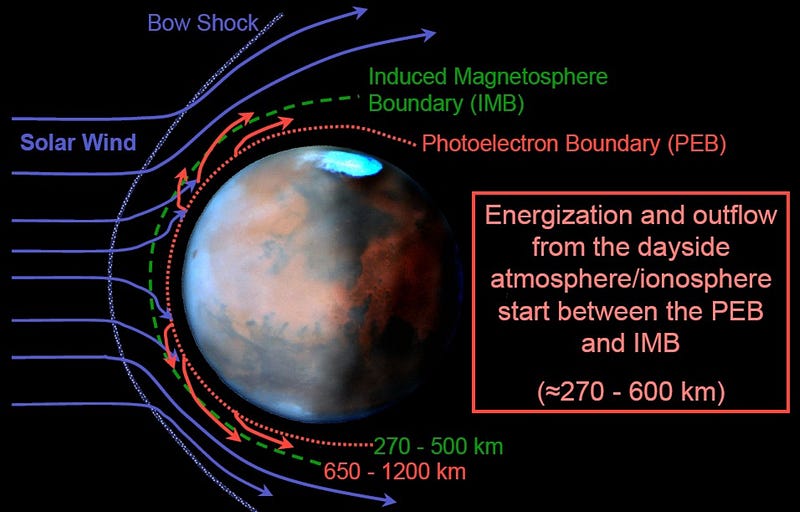
It is entirely plausible that, for 1.5 billion years, our Solar System possessed two heavily-inhabited planets, where single-celled life developed and took hold. It’s quite likely that if any life developed on one planet before the other, a random asteroid strike would kick material up into interplanetary space, and wind up transporting that life from either Earth to Mars or Mars to Earth.
If it sounds unlikely to you, keep this in mind: 3% of all the meteorites that we’ve discovered on Earth don’t come from asteroids or comets, but have a Martian origin. This was only confirmed by the Mars Pathfinder mission in the late 1990s, which analyzed the soil it found and allowed us to definitely determine that yes, rocks which originated on another planet have made their way to Earth. And therefore, likely, the converse is also true.
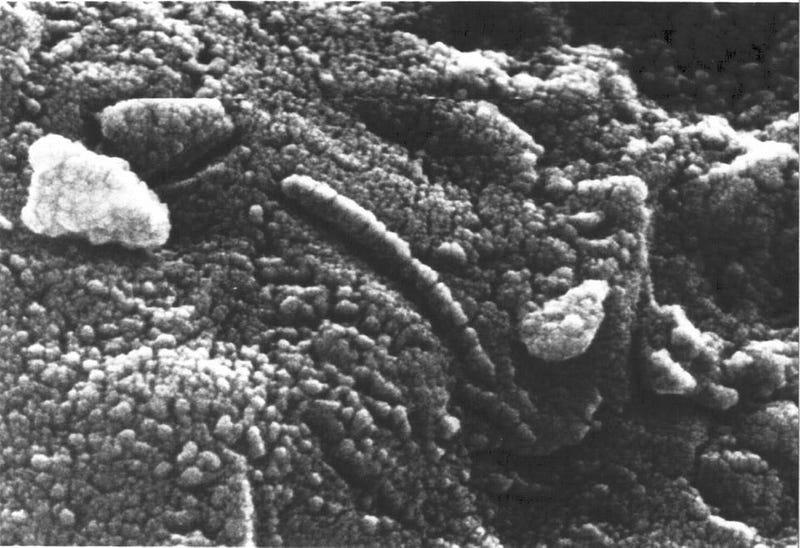
The story of Venus was that of a quick death. It may have been born as ready-for-life as Earth was, but its close proximity to the Sun created a very water-vapor-rich atmosphere, which trapped enough heat to create a runaway greenhouse effect, boiling the oceans and ruining its chances for life.
But Mars fared much better. Its atmosphere, liquid water, and rotation rate allowed it to develop and maintain stable, life-friendly conditions for 1.5 billion years. Its magnetic field protected it from the Sun for all that time, allowing rivers and sediment buildup and hydrogeologic processes to take place. It seems almost inconceivable that life wouldn’t have arisen there, given how quickly and easily it showed up and thrived on Earth. It was only because of its small size, which caused it to cool fast, lose its magnetic protection, and then its atmosphere, that it became uninhabitable.
For the first few hundred million years after the Solar System formed, we had three potentially habitable worlds: Venus, Earth, and Mars. If things were slightly different if the Sun was smaller and fainter, if Venus orbited at a greater distance, or perhaps if it were simply rotating more quickly, it might not have had the runaway greenhouse effect that rendered it uninhabitable so quickly.
But perhaps surprisingly, Mars fared much better. While life was arising on Earth and transforming our atmosphere, perhaps something similar was at play on Mars. Perhaps rocks, chemicals, and even life was exchanged between our two worlds by interplanetary impacts, and perhaps Mars was actually inhabited for a billion years or more. Once it died, however, there was no way back. If we look back 3 billion years in our past, Earth was the last habitable planet standing.
Further reading on what the Universe was like when:
- What was it like when the Universe was inflating?
- What was it like when the Big Bang first began?
- What was it like when the Universe was at its hottest?
- What was it like when the Universe first created more matter than antimatter?
- What was it like when the Higgs gave mass to the Universe?
- What was it like when we first made protons and neutrons?
- What was it like when we lost the last of our antimatter?
- What was it like when the Universe made its first elements?
- What was it like when the Universe first made atoms?
- What was it like when there were no stars in the Universe?
- What was it like when the first stars began illuminating the Universe?
- What was it like when the first stars died?
- What was it like when the Universe made its second generation of stars?
- What was it like when the Universe made the very first galaxies?
- What was it like when starlight first broke through the Universe’s neutral atoms?
- What was it like when the first supermassive black holes formed?
- What was it like when life in the Universe first became possible?
- What was it like when galaxies formed the greatest numbers of stars?
- What was it like when the first habitable planets formed?
- What was it like when the cosmic web took shape?
- What was it like when the Milky Way took shape?
- What was it like when dark energy first took over the Universe?
- What was it like when our Solar System first formed?
- What was it like when planet Earth took shape?
- What was it like when life began on Earth?
- What was it like when oxygen appeared and almost murdered all life on Earth?





